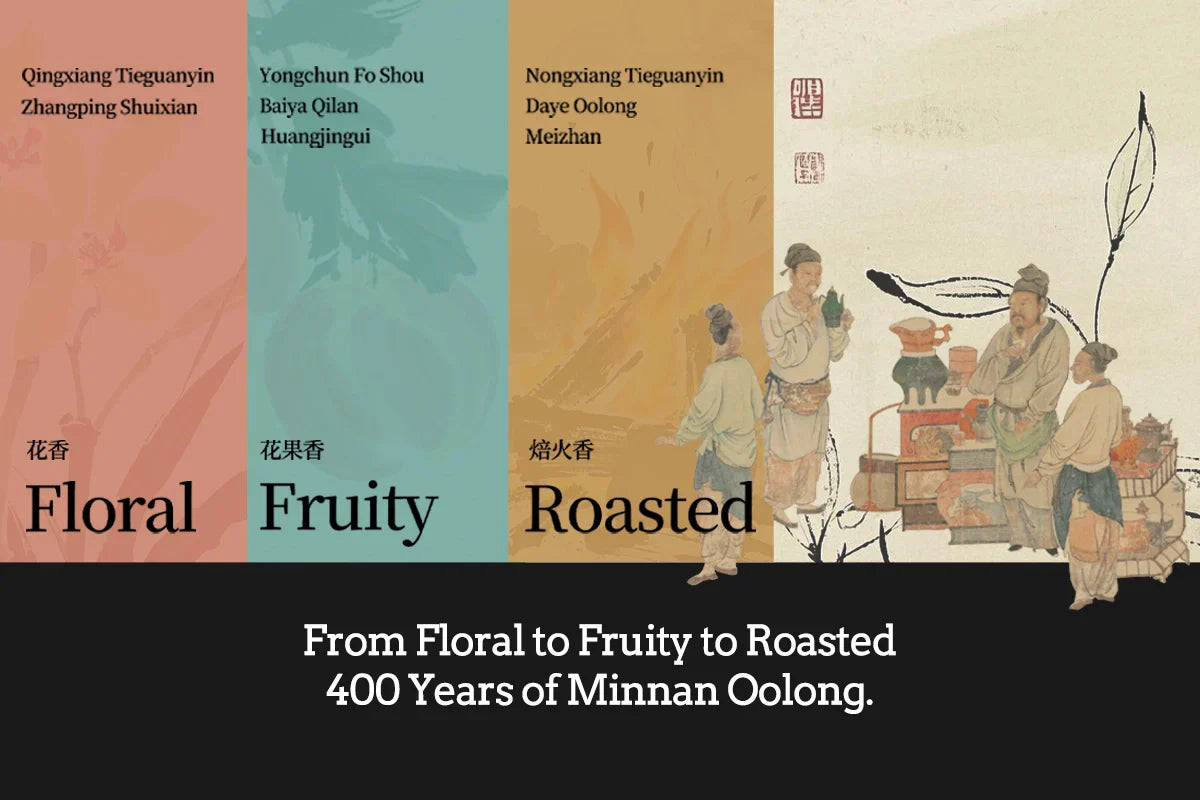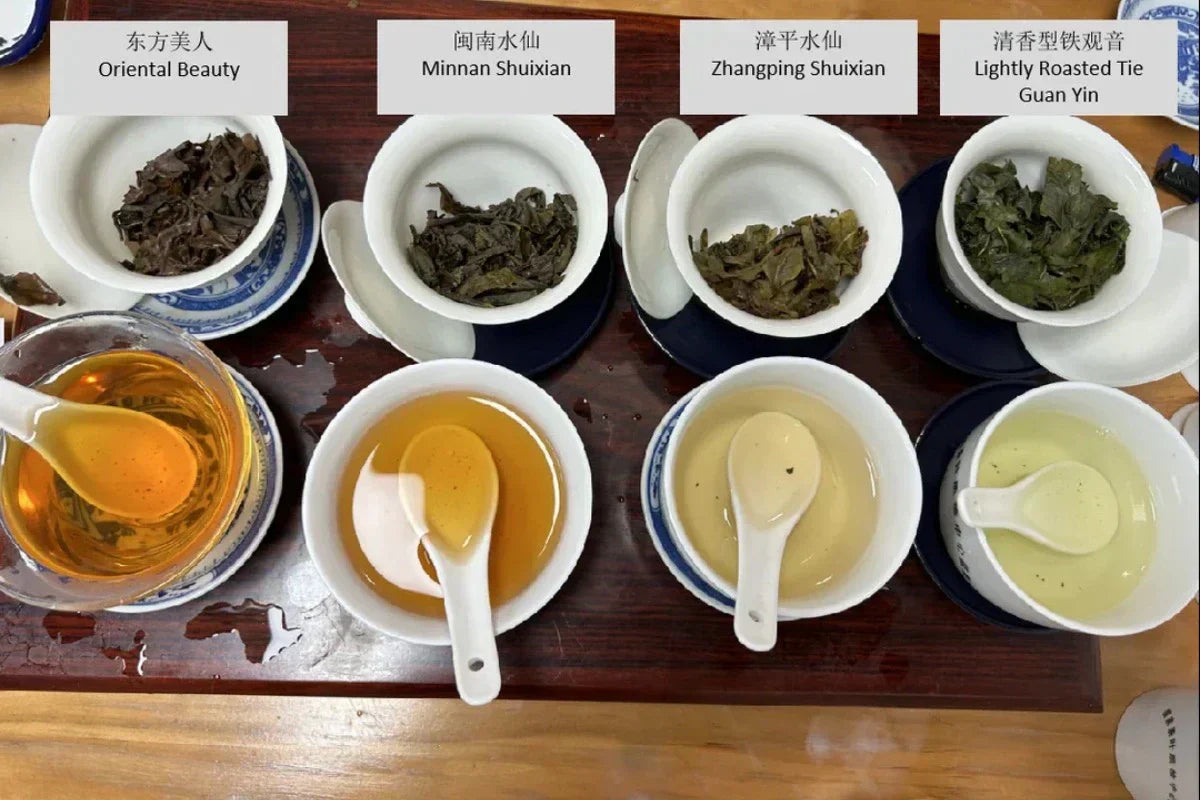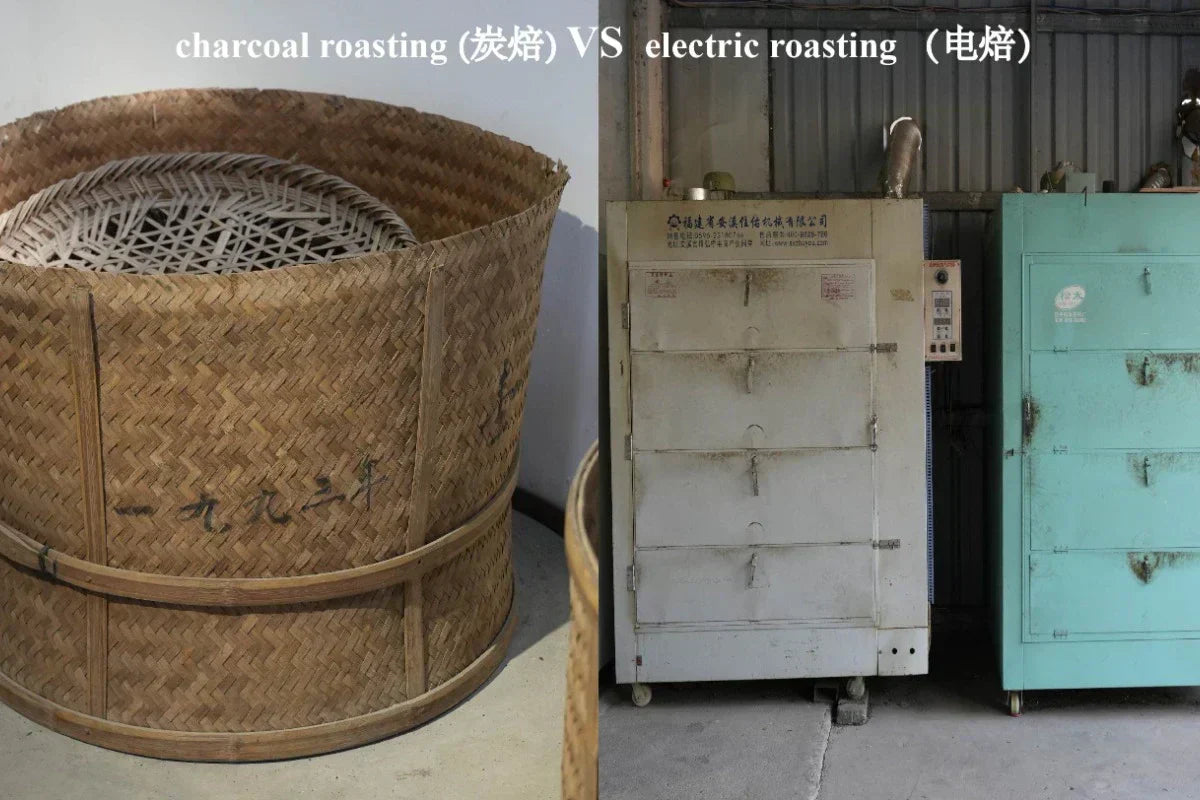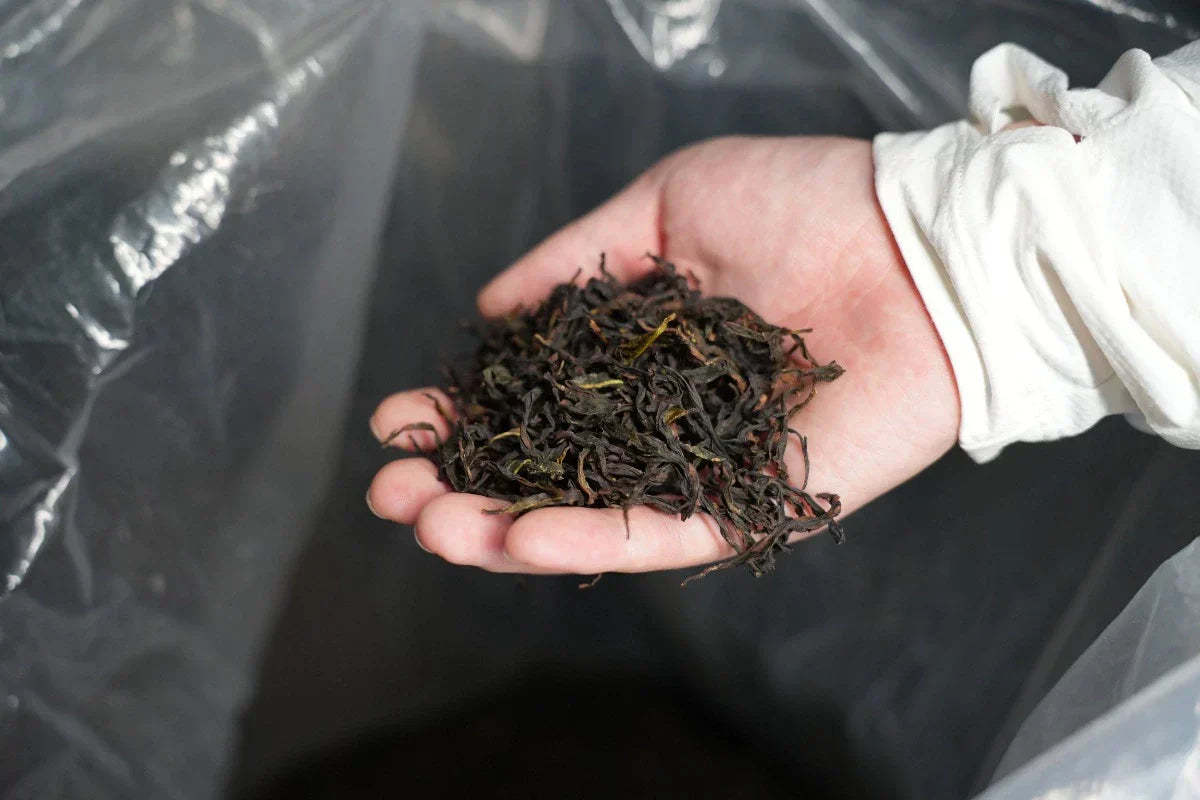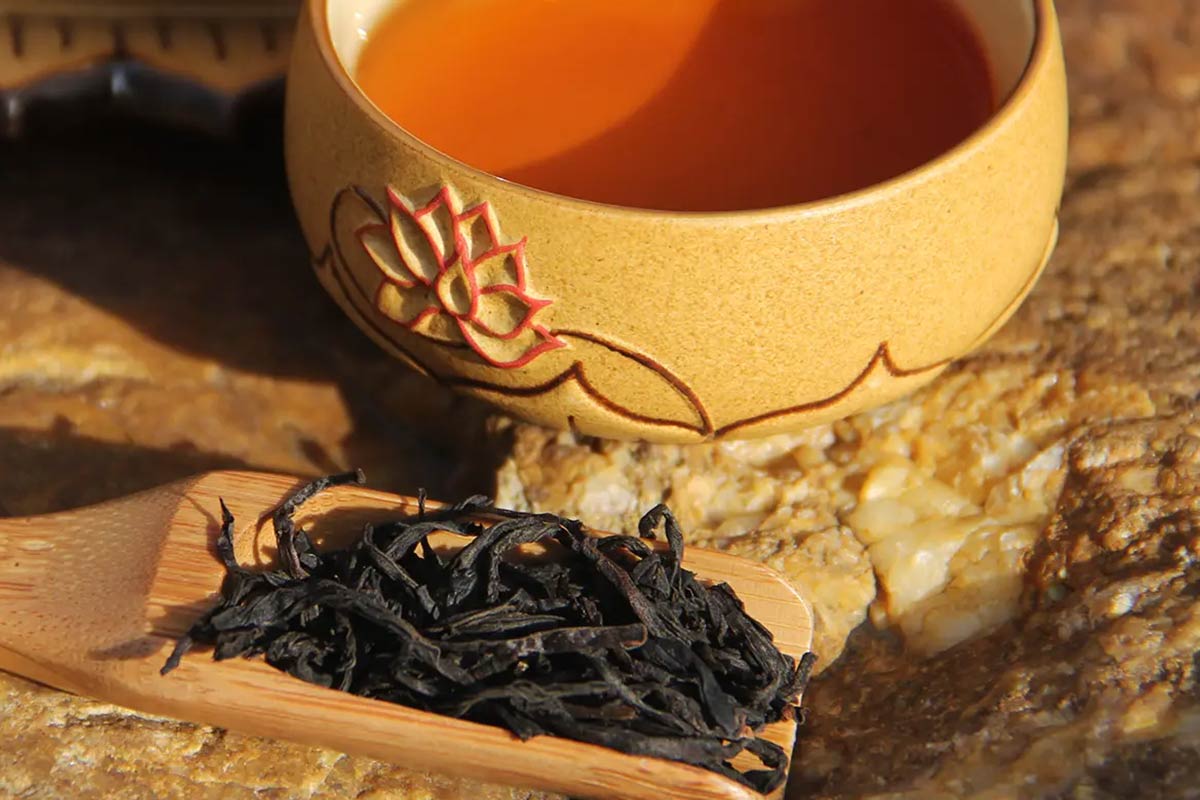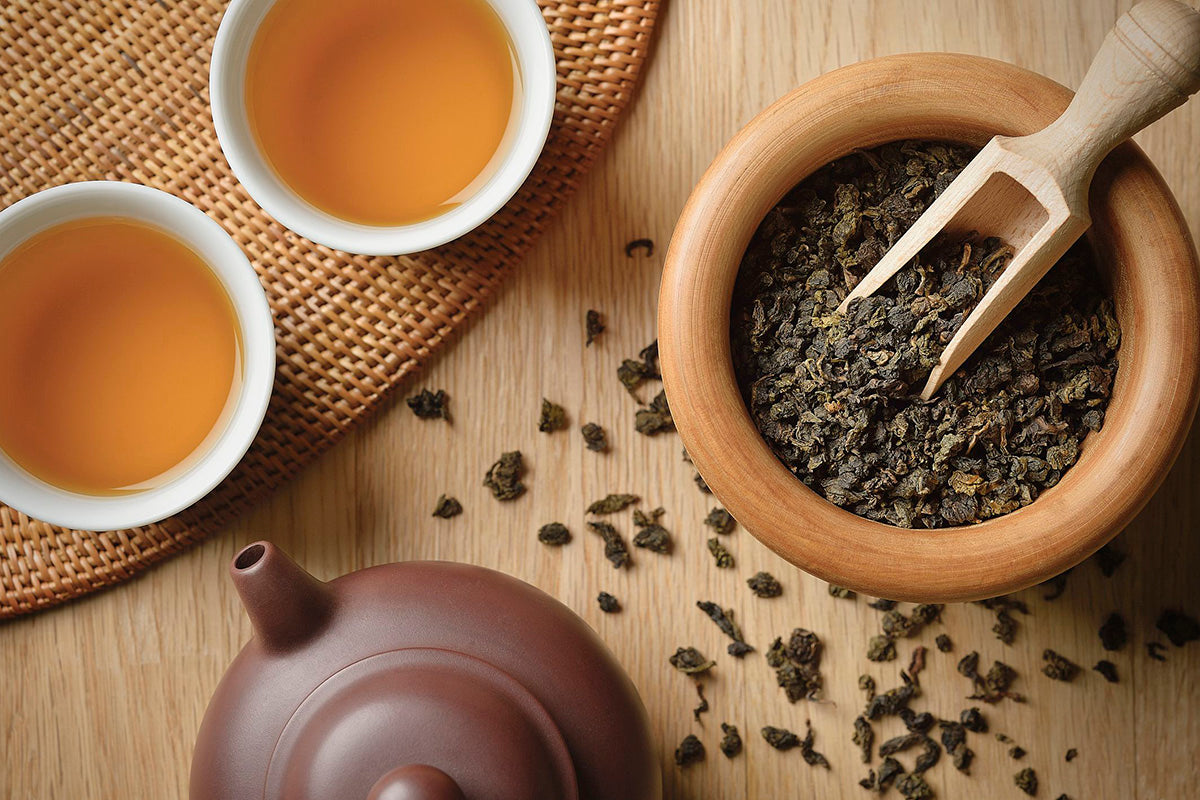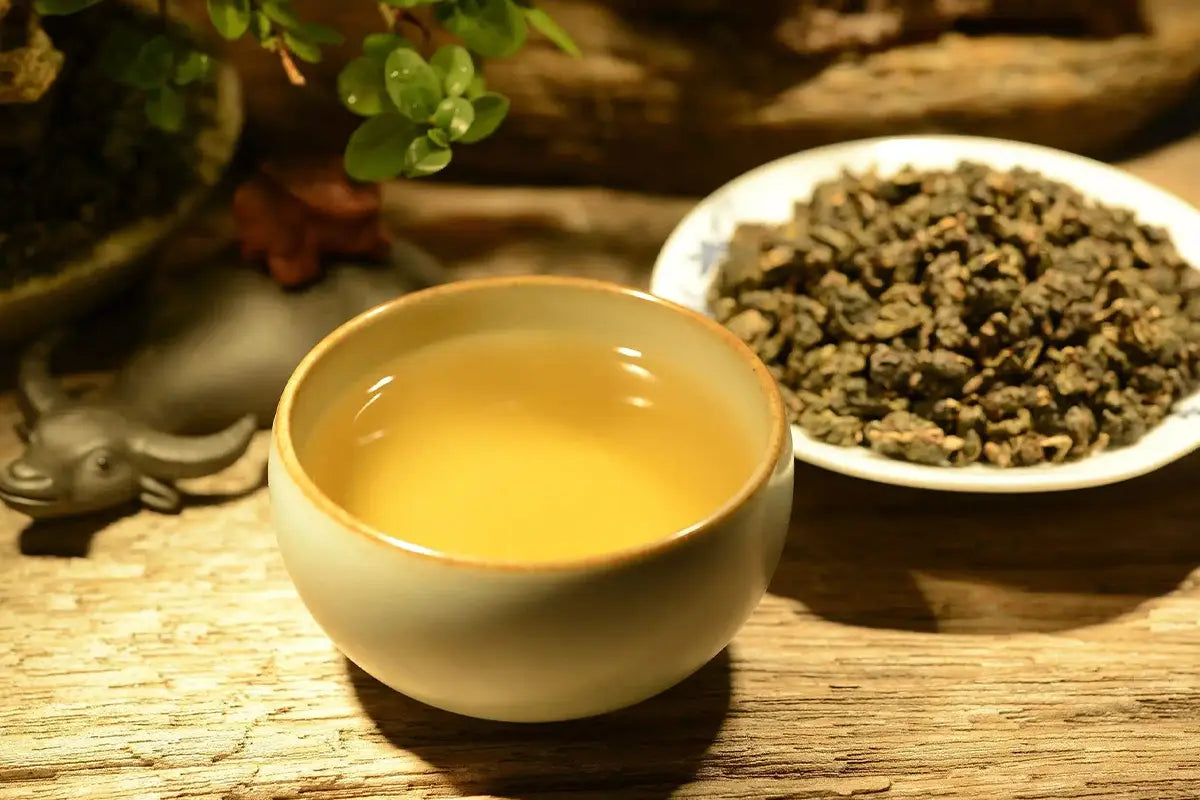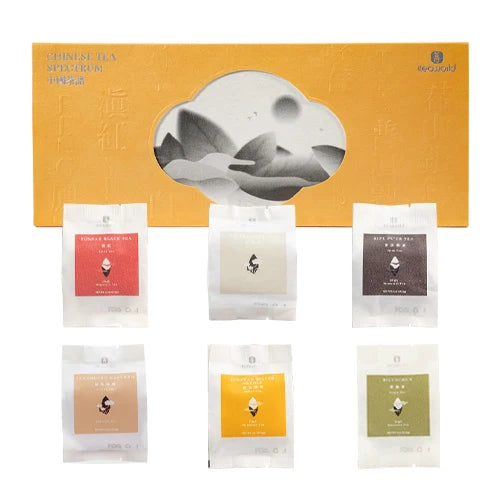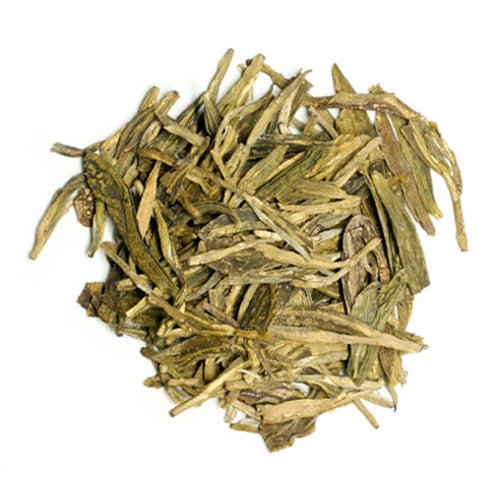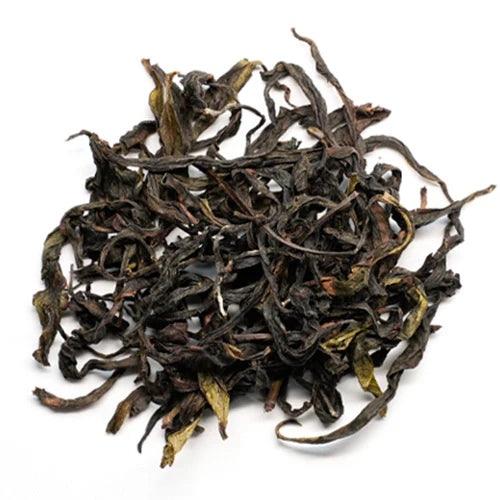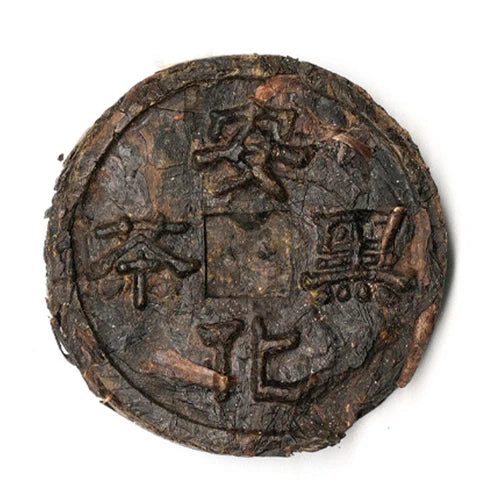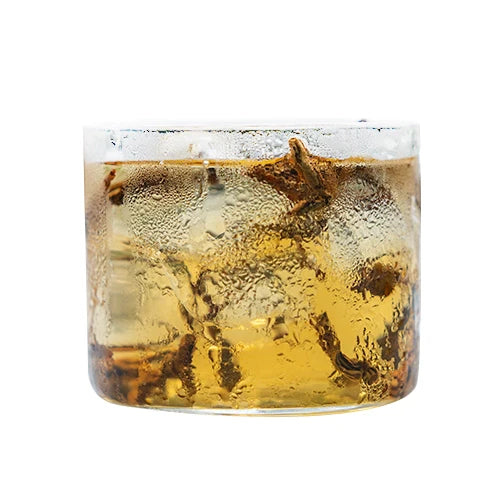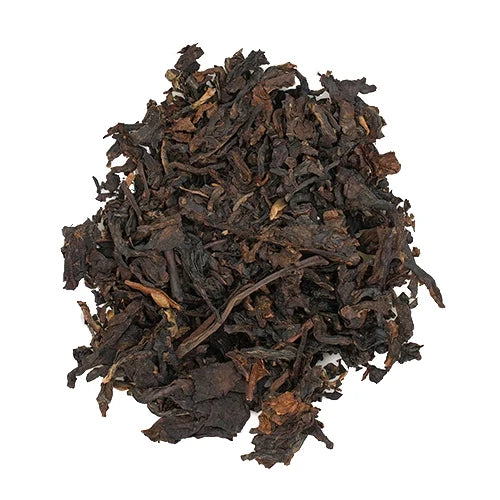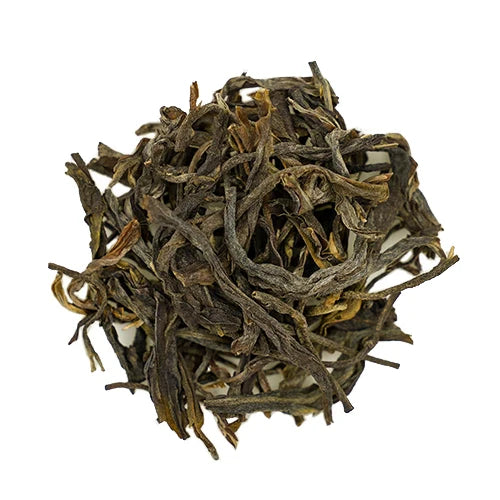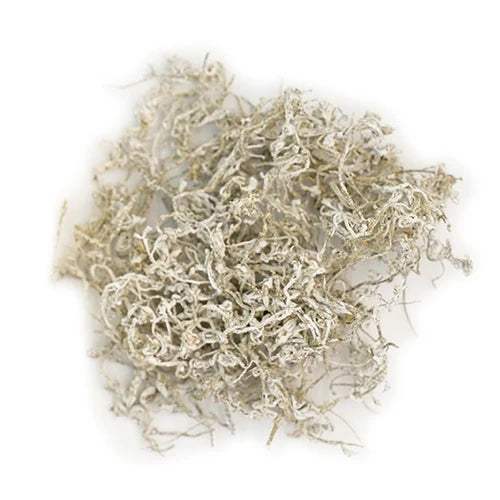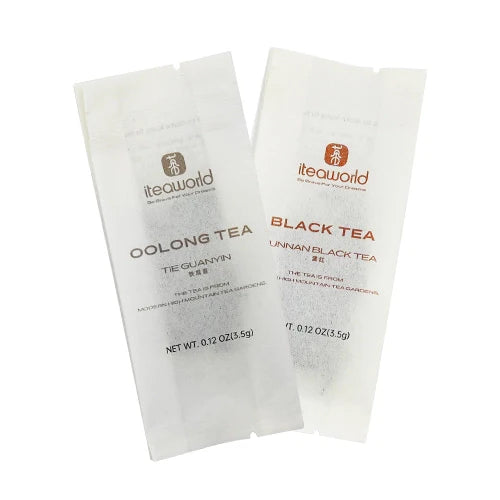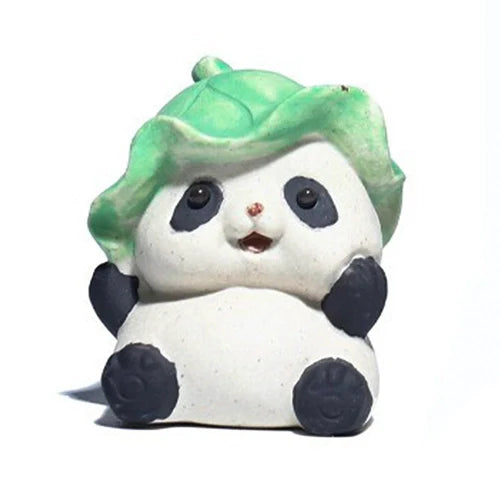Oolong tea, also known as "Qing tea," is an improvement on the black tea processing method and is a semi-fermented tea. After the tea buds have withered, they are processed to promote oxidation. Loose leaf Oolong tea combines the freshness of green tea and the richness of black tea. The standard for oolong tea in China is GB/T30357. In addition to the eight varieties such as Tie Guan Yin, Huang Jin Gui, Shui Xian, Rou Gui, Dan Cong, Fo Shou, Da Hong Pao, and Bai Ya Qi Lan, there is also oolong tea. Below, I will share these varieties of oolong tea with you all, hoping to help everyone choose oolong tea.
Each oolong tea has a different appearance. Oolong teas come in a wide variety of shapes, some of which are somewhat similar in appearance to loose leaf black teas. Therefore, sometimes you need to be very familiar with the tea leaves to recognize the varieties from the shape of the leaves.
NO.1 Tie Guan Yin (Iron Goddess)
TieGuanYin represents oolong tea and is one of its finest varieties. As early as the Qing Dynasty, tea farmers in Anxi cultivated Tie Guan Yin. The tea has a unique "orchid-like" fragrance, also known as "Guan Yin Yun." If recommending Tie Guan Yin, I believe Anxi Tie Guan Yin is the best. Authentic Anxi Tie Guan Yin is produced in Anxi, Fujian. When choosing Tie Guan Yin, based on standard indicators, it can be divided into light fragrance and strong fragrance types, and a unique aged fragrance type. The light fragrance Tie Guan Yin has four grades: special grade, first grade, second grade, and third grade. The more tightly twisted the leaves are, the more uniformly they are broken, and the greener the color, the better. The strong fragrance Tie Guan Yin has five grades, from special to fourth. The aged fragrance type has three grades: special, first, and second.
NO.2 Da Hong Pao (Big Red Robe)
Da Hong Pao is also a top-tier oolong tea and is considered a jewel among oolong teas. The name "Big Red Robe" comes from the reddish hue the tea buds take on as they sprout. Based on quality standards, Da Hong Pao can be divided into four grades, with the special grade being the best. Mainly produced in Wuyi Mountain, Fujian, it has the freshness of green tea and the richness of black tea, earning it the title "King of Wuyi Tea" and making it one of China's top ten famous teas. High-quality Da Hong Pao has tightly twisted leaves with a deep green with a hint of purple hue and is covered in fine, fuzzy hairs. The Wuyi Da Hong Pao is very resilient to multiple infusions, producing a bright orange-red brew with a unique orchid fragrance, a distinct "rock rhyme," and a sweet, refreshing taste that lingers in the throat.
NO.3 Huang Jin Gui (Golden Osmanthus)
Huang Jin Gui, another type of loose leaf oolong tea, is mainly produced in Meizhuang Village, Huqiu Town, Anxi County, Fujian. Known for its osmanthus fragrance, it has been sold overseas since 1840 and has been designated as a national-level tea variety by the National Tea Tree Varieties Appraisal Committee. For Huang Jin Gui, based on indicators, it's primarily divided into special and first grades. The tighter and more uniform the leaf twists, and the more golden-green they appear, the better. When brewed, Huang Jin Gui produces a bright golden-yellow tea with a hint of osmanthus fragrance, blended with notes of gardenia and pear blossoms, offering a pure, refreshing taste that lingers in the mouth.
NO.4 Shui Xian (Water Fairy)
Shui Xian, also an oolong tea, is produced in North Fujian and can rival Tie Guan Yin in terms of quality. In the Minnan dialect, "Shui" means beauty. Tea picked from the beautiful fairy mountains is called "Shui Xian." According to standards, Shui Xian is divided into strip-shaped and tightly pressed types. Regarding the strip-shaped Shui Xian, based on indicators, it's divided into special, first, second, and third grades. The tighter and more robust the leaves, the more uniformly broken, and the darker and shinier they are, the better the quality. The tightly pressed Shui Xian also has four grades, with the best ones appearing flat, dark brown, and shiny, exuding a high floral fragrance. Specific sensory quality requirements are shown in the chart below. I particularly like Zhangping Shui Xian tea, commonly referred to as Shui Xian tea cake, the only pressed tea in the oolong category. The fragrance of Zhangping Shui Xian tea cake is lofty and prolonged, with a naturally pleasant floral scent. It also has the quality characteristic of green leaves with red edges. The brewed tea is bright golden and clear, and if you taste it carefully, there's a hint of narcissus fragrance that has a lingering aftertaste.
NO.5 Rou Gui (Cassia)
Rou Gui primarily originates from the Wuyi Mountain area and is extensively cultivated, with large production volumes. Now, it's grown in the northern, central, and southern parts of Fujian. Rou Gui tea can be divided into special, first, and second grades based on different standards. The higher the quality of Rou Gui, the tighter, plumper, and shinier the leaves appear. The brewed tea has an orange-red color and a strong, sweet, and elegant taste, somewhat reminiscent of frankincense, peach, or cinnamon, with a rich aroma.
NO.6 Dan Cong (Single Bush)
Dan Cong tea is a semi-fermented oolong made from single bushes of the Camellia sinensis plant. Among the Dan Cong teas, Phoenix Dan Cong and Leading Dan Cong are particularly famous. Personally, I prefer Phoenix Dan Cong. Generally produced in Phoenix Mountain in Chaozhou, Guangdong, it boasts the four excellences of "beautiful shape," "emerald color," "rich fragrance," and "sweet taste." There are actually many varieties of Fenghuang DanCong, such as Song Zhong Zhi Lan fragrance, ginger flower fragrance, magnolia fragrance, osmanthus fragrance, duck poop fragrance, and honey orchid fragrance, etc. Here, I mainly recommend the Phoenix Single Bush Honey Orchid fragrance, particularly favored by us Chaoshan people. High-quality Honey Orchid fragrance Phoenix Single Bush has straight, uniform leaves that are plump and shiny, with a dark and lustrous color. The brewed tea is orange-yellow, clear, and bright. It's smooth on the palate, with a rich and sweet taste, a distinctive orchid fragrance, induces salivation, has a refreshing aftertaste, and is very resilient to multiple infusions. As an old tea enthusiast, I particularly enjoy Phoenix Single Bush Honey Orchid fragrance; the tea aroma is pervasive, and it has a lingering sweetness when swallowed, truly unparalleled.
NO.7 Fo Shou (Buddha's Hand)
Fo Shou tea is an oolong made from the tender shoots of the Buddha's Hand variety. After brewing, this tea emits a fragrance resembling Buddha's Hand citrus, hence the name. Like Tie Guan Yin, Fo Shou also comes in light fragrance, strong fragrance, and aged fragrance types. The light fragrance Fo Shou is divided into special, first, and second grades, while the strong fragrance Fo Shou comes in special, first, second, third, and fourth grades. The aged fragrance Fo Shou is divided into special, first, second, and third grades. Among the Buddha's Hand varieties, Yong Chun Fo Shou is highly recommended. It was even awarded the title of "China's First Olympic Tea" in 2007. High-quality Yong Chun Fo Shou leaves are tightly twisted, curled, and plump, with an attractive shape and a dark green, sandy green luster. The brewed tea is bright golden, with a full-bodied, refreshing taste, smooth on the palate, rich in fragrance, and a lingering sweetness.
NO.8 Bai Ya Qi Lan (White Bud Odd Orchid)
Bai Ya Qi Lan is a new variety of oolong and is one of the top-quality oolongs, mainly produced in Pinghe County, Fujian, with a unique and strange orchid fragrance. According to the standards, Bai Ya Qi Lan can be divided into light fragrance and strong fragrance types. The higher the quality of Bai Ya Qi Lan, the more tightly twisted, plump, and shiny the leaves appear, with a dark brown luster. The brewed tea is bright golden-yellow and clear, with a rich and mellow taste, a pronounced orchid fragrance, and a noticeable aftertaste.
NO.9 Taiwan Oolong Tea
Taiwan oolong tea has many classification methods. It can be categorized based on quality into special, first, second, and third grades, or based on its fragrance into light fragrance, mature fragrance, and honey fragrance types. The light fragrance Taiwanese oolong has a fresh and pure aroma. According to classification standards, it's divided into granular and strip-shaped types. Granular Taiwanese oolong has a rounded, heavy shape, while the strip-shaped is tightly twisted and heavy. The mature fragrance Taiwanese oolong also comes in granular and strip-shaped types, with a mature fruit aroma that slightly differs from the light fragrance type. Honey fragrance Taiwanese oolong is generally bud-shaped, with the highest quality leaves displaying a bud-like appearance with many white hairs, even and uniform breaks, and a harmonious, shiny color mix of brown, green, yellow, red, and white. It's unique. In terms of aroma, honey fragrance oolong has a honey fruit scent.
When buying Taiwanese oolong, the more common types are Wen Shan Bao Zhong, Dong Ding Oolong, High Mountain Oolong, and Bai Hao Oolong.
1)Wen Shan Bao Zhong
High-quality Wen Shan Bao Zhong mostly comes from the Wen Shan area of Taipei and is a lightly semi-fermented oolong (the least fermented among Taiwanese oolongs). This tea has tightly twisted leaves with an ink-green hue and emits a delicate floral aroma. It tastes fresh and moist with a smooth mouthfeel.
2)Dong Ding Oolong
Authentic Dong Ding Oolong comes from Dong Ding Mountain in Luguhu, Nantou County, Taiwan, and is locally known as the "Holy Tea." Dong Ding Oolong leaves are curled into semi-spheres, tightly twisted and bent, with a shiny, ink-green color. The brewed tea is somewhat orange-yellow, with a rich floral scent, a pleasant, full-bodied taste, and a pronounced throat feel. PS: When brewing Dong Ding Oolong, it's best to use spring water, as it's rich in minerals and contains less chloride, resulting in a sweeter and clearer tea.
3)High Mountain Oolong
High Mountain Oolong, mainly produced in areas like Nantou and Jiayi, is also called Jin Xuan or Soft Branch. It's generally picked around the Qingming Festival. There are many varieties of High Mountain Oolong, including Jin Xuan and Shan Lin Xi. High-quality High Mountain Oolong is shaped like a hemisphere or sphere, with plump, tightly twisted leaves and a dark green color. The brewed tea is orange-yellow, clear and bright, with a slightly sweet or green fruity taste, a lingering sweetness, and a long-lasting freshness.
4)Jin Xuan Oolong
Jin Xuan Oolong is quite special, emitting a faint milk and floral scent, which is rather delicate. When tasted, it imparts a sweet and refreshing sensation.
5)Bai Hao Oolong
Bai Hao Oolong, also known as Oriental Beauty, mainly comes from the areas of Xinzhu and Miaoli in Taiwan. It's a Taiwanese oolong with a higher fermentation level and is hailed as the "highest grade of oolong tea." The best Bai Hao Oolong leaves are naturally curled, resembling flower buds, covered with many white tips, and are shiny. The brewed tea is golden-yellow, with a rich and mellow taste, devoid of bitterness or astringency, and carries the scents of mature fruit and honey, making it a rare gem among teas.
Recommended Oolong Tea
These are the nine varieties of Chinese oolong tea. Oolong tea is subdivided into many more varieties within these nine major categories. The most frequently drunk by Chinese people are usually the more well-known oolong teas such as Tieguanyin and Dahongpao. If you don't know which oolong tea to start with, then I suggest you start with an oolong tea sampler. iTeaworld's oolong tea selection is aimed at the novice tea drinker. You can taste 4 types of oolong tea at a time. You can try 4 teas at a time at a minimal cost. You will be able to find out your favorite Oolong tea varieties. These four Oolong teas are representative of Oolong teas, such as Tieguanyin, Dahongpao, Dancong, and Shui Xian Oolong teas are all included.
Summarize
There are all kinds of Chinese Oolong teas, and I hope that the above will help you to know more about Chinese Oolong teas, and help you to find your favorite Oolong tea. Drink a cup of oolong tea, taste a cup of Chinese culture. Raise a glass with you, drink tea and celebrate the moment.
